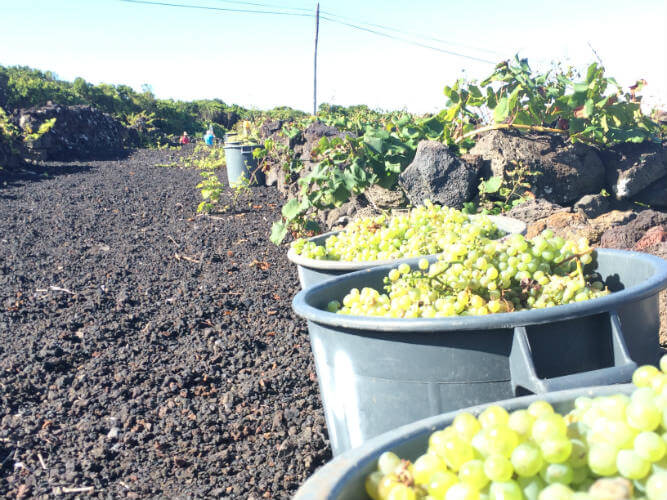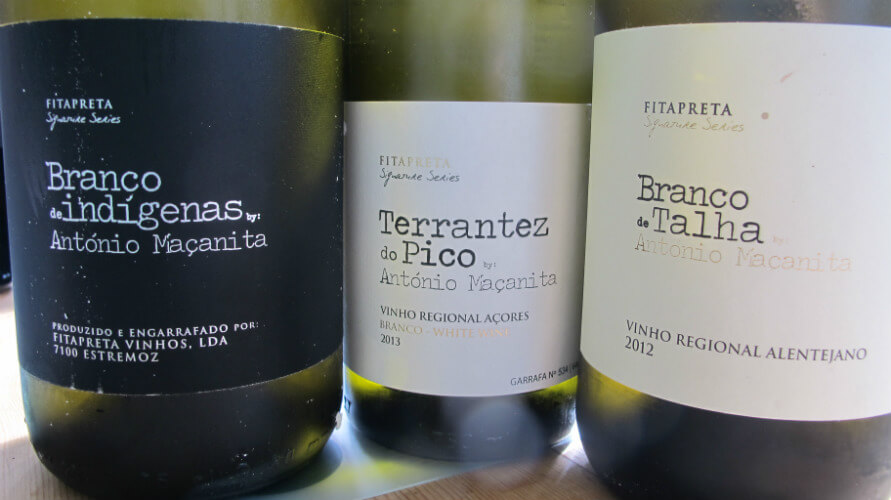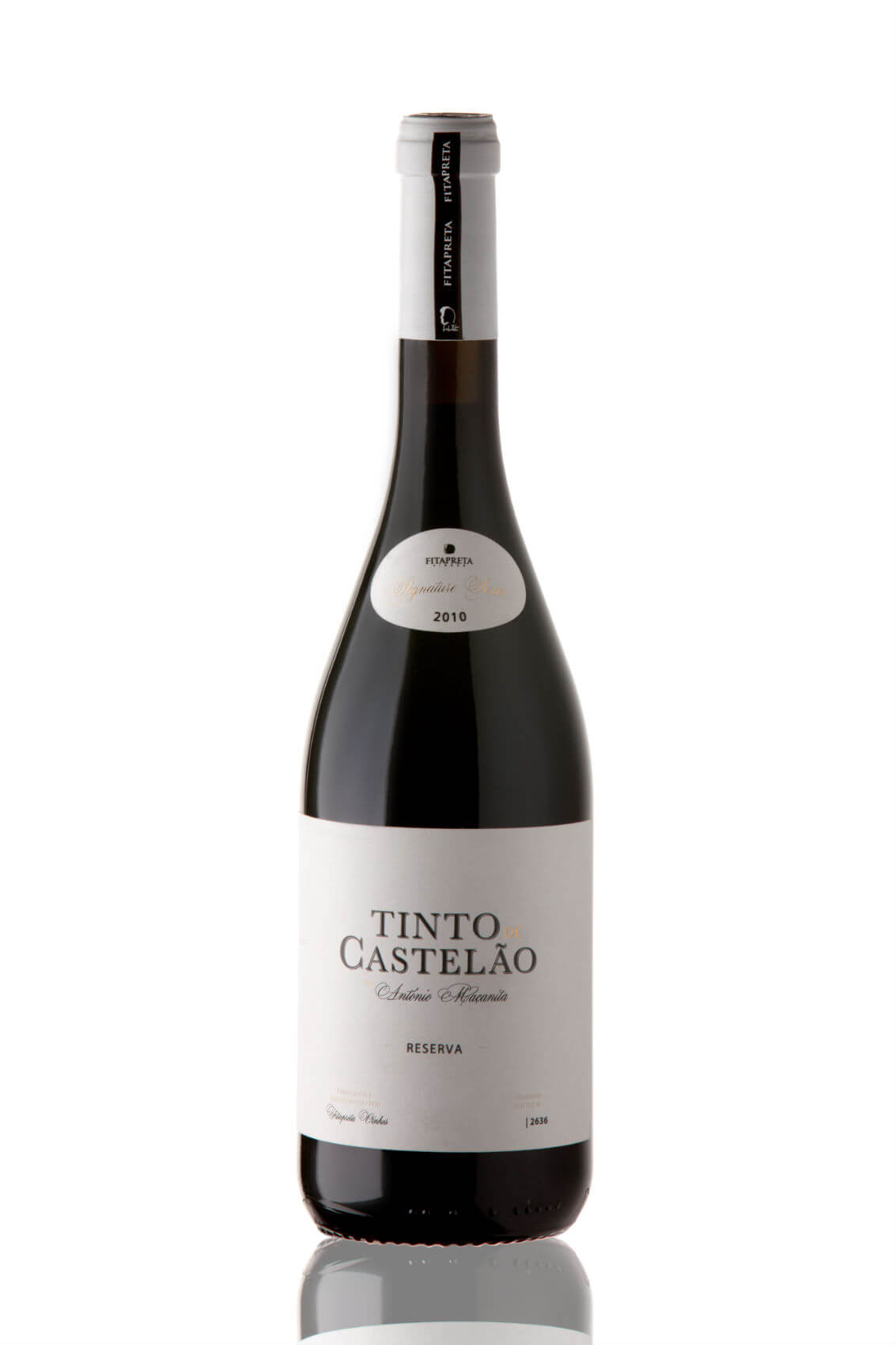Text Sarah Ahmed
The motto at Fita Preta is “why spend a lifetime trying to blend in, when you were born to stand out.” And so it is with the wines.
Take the Sexy range – brash branding (tacky, some might say) for a country which has been described as the most socially-conservative Roman Catholic nation.
Or the subject of this post, Fita Preta’s exciting, envelope-pushing Signature Series wines which I’ve written up below. Mostly single varietal, these wines fly squarely in the face of Portugal’s tradition of blending different grape varieties and yet, in other respects, positively kowtow to tradition.
The man behind the signature is António Maçanita, Fita Preta’s co-founder and winemaker. I asked him about the challenges of being different, what he has learned along the way and what next? Naturally, I also tasted the latest Fita Preta Signature Series releases, which I have reviewed below.

António Maçanita at Winery – Photo Provided by Fita Preta | All Rights Reserved
The interview
Sexy but no Kiss: António you have a reputation for being a sharp marketeer yet, with such a diverse portfolio of brands – Sexy and the four different Fita Preta labels – you seem to have ignored the oldest rule in the book – Keep it simple, stupid (K.I.S.S.).
As you well know, in Portugal it is always with a kiss, or two, depending on who you meet. And we are no different. Our K.I.S.S. is viewed just from a different angle, not from “what we believe the market will like”, but from the angle of what we believe is beautiful, aesthetic, amusing, worth the effort, challenging and then hope that consumer will like and share the same excitement. It is sometimes as you say “not simple” and we know that. But more important is authentic and we bottle and label only what we can stand behind.
Saying this, as we grew and launched new wines we had to try to organize our message for the public as well as possible. For example we have been separating the communication (website and social media) for the Sexy label from the rest of the portfolio because it is such a strong brand and also a very party driven wine that needs its own world.
Finally thanks for the compliment “sharp marketeer.” I love it – for a winemaker that comes from a family of anti-business teachers and had never sold one thing in his life before wine, not even his old surfboards, it’s great.
What’s in a name: Turning to Fita Preta’s Signature Series brand it’s not an easy thing to court the export market with unheard of and unpronounceable grape varieties and wine regions. What motivated you to make this range and put your name to it?
The signature series by António Maçanita is where I give myself more room for trial and error, to dream higher, to go out of the box. I question the whys and why nots. It is here that I change the world, even if it is just a little bit and take responsibility for it.
My first signature was 2008 “Branco de Tintas” (a white wine out of red grapes) made out of Trincadeira and Alfrocheiro. I made it during a phase when there were not enough white grapes in the Alentejo for the market needs. So I thought why get into the craziness again of ripping reds to plant whites and not do whites out of reds grapes? We did it and the wine was really good. It ended up in our local wine magazine’s best wines of the year by and was one of the first white out of reds in Portugal. Now there are more than a handful of producers that do it. But the funniest thing (or not) is that it was not certified as Alentejano because it was a white wine made out of red wine grapes and yet that year the region allowed producers to use 20% of white wines from outside the region and still get certified Alentejano … go figure.
From there I got excited about “talhas” (clay pot amphorae). The idea clicked during a plane journey back from visiting friends in California who are making fantastic Sauvignon Blanc in concrete eggs. I said to myself why not use our “Talhas” that are part of our heritage – a symbol of the Alentejo? So when I arrived, we bought a 1940’s 1000 liter “Talha” (which we paid for with 300 bottles of sparkling wine). However, we decided to do modern winemaking (whole bunch pressing, cold fermentation) instead of the classic “Talha method” which is with skin contact. The result after fermentation was simply undrinkable – “beeswax” and “chemical.” We bottled it anyway saying “this is what it is” and, after 6 months in bottle, it became incredible. The “chemical” part was on the back of the nose giving the wine Riesling-like layers and the fruit came to the front of the palate – really fresh and clean. It is still one of my favorites and an anthem to Alentejo history.
From here the role of Signature became saving an almost extinct variety, “Terrantez do Pico.” It’s now in good shape and being re-planted all over the Azores. I am also testing another Azorean grape “Arinto dos Açores“, making a pure “Branco de Indígenas” (a white with neither inoculated yeast or temperature control) and, lastly, bringing Castelão back.

António Maçanita at Talha Quest – Photo Provided by Fita Preta | All Rights Reserved
Coming a full a circle? Harking back to tradition (whether grape variety, winemaking process or wine style) is a hallmark of Fita Preta’s Signature Series. What have you learned from delving into the past and in what respects, if any, have you adapted tradition for contemporary tastes?
As an old world producing country we introduced a lot of new techniques – stainless steel, selected yeasts, foreign varieties, block planted (varietal) vineyards, wines aimed at the consumer etc. This has lead to an overall improvement of our wines both reds and whites, but it has also taken away some of the “soul” of our wines – what gave the wines a sense of place when you tasted them. The challenge is complex. It is between choosing what to bring back that can add complexity and typicity and what new techniques to apply while always keeping in mind that we too are part of history.
Pico potential: I recently visited the Azores and I was astounded by the quality and distinctive mineral, salty character of its dry whites, also to learn about Arinto dos Açores and Terrantez do Pico when I’d thought Verdelho (in sweeter/fortified styles) was the mainstay of production ?
The potential of the Azores is incredible. The grape varieties Verdelho (the true one), Arinto dos Açores or Terrantez do Pico are of incredible oenological potential. They are mineral and salty and, with good acidity, have great ageing potential. The “terroir” is unique with volcanic rock, ocean proximity and cold to moderate weather. This combination is explosive for great white wines. And I agree that this new batch of 2013 shows just that.
I also believe that the serious fortified wines that forged Pico’s reputation in the past will see a revival. As letters and even royal banquet menus show, it rivaled the best Madeira in markets like the UK, Holland, US and Russia. It was known in some markets as Pico-Madeira because of this resemblance.

Pico Harvest – Photo Provided by Fita Preta | All Rights Reserved
A lot! Our Sexy brand has experienced great growth for its “traditional method” Sparkling wine in France and the US. For Fitapreta, Palpite and Preta a quarter of our vineyards are now in conversion to organic certification. On the Azores I am working closely with other producers and the agricultural department as well as developing our own production project on the islands. And then there are my consultancy projects at Quinta de Sant’Ana, Cem Reis and Arrepiado Velho among others.
The wines
Fita Preta Signature Series Branco de Talha by Anónio Maçanita 2012 (Vinho Regional Alentejano)
Talha is a reference to a very traditional winemaking tradition which dates back to the Roman’s presence in Alentejo many years ago. Talha means that the wine has been fermented in an amphora – just the one here – a 1000l amphora from 1946. And drawing on tradition, this wine sticks with the region’s classic white varieties – Roupeiro (70%) and Antão Vaz (30%). Or at least these dominate the wine where (unusually) the fruit is sourced from 25-30 year old field blend vines. I was surprised by the paleness of the wine and its tight nose until I realised it was transferred to stainless steel tanks after 28 days (amphorae are more porous than a tank which results in more oxidation). So how does this unusual wine – a blend of traditional and modern techniques- taste? It’s high-toned, quite aldehydic which could spell disaster but here is a positive, making for a lively, mercurial wine of lovely green, fresh nutty, fino sherry-like complexity and freshness. A pillowy texture adds to its sense of levity whilst simultaneously bringing weight. A long finish reveals earthier notes going through. Lots of interest here – a ying and yang push me pull me wine. I like its energy, complexity and persistence. 1,300 bottles produced. 13.5%
Fita Preta Signature Series Branco de Indígenas by Anónio Maçanita 2010 (Vinho Regional Alentejano)
Branco de Indígenas is a reference to the fact that this single varietal Arinto has been barrel-fermented (French oak) with 100% natural/indigenous yeast. With its bracing acidity and clean, focused citrus palate I think of Arinto as the Riesling of Portugal. But the winemaking brings another dimension to the grape. Or more precisely, it brings greater dimension, broadening out the palate, so it’s less citrus juice, more lemon rind and, like lemon rind, it has a textural quality – a creamy quality I associate with natural yeasts, perhaps also a function of lees/lees stirring? The wine is more savoury too, with sour dough and some oak torrefaction (nuttiness). Personally, I like to see a bit more fruit and energy, but if texture is your thing, it has an attractive silky languor. 800 bottles were produced. 12.5%

Branco de Talha, Terrantez do Pico, Dranco de Indígenas – Photo Provided by Fita Preta | All Rights Reserved
Fita Preta Signature Series Arinto do Açores 2013 (Vinho Regional Açores)
Master Sommelier João Pires selected this taut white for a tasting at 10 Fest Azores – a brilliant showcase for the produce of the island and the talent of local and international chefs. It’s a super-intense, bracing example with terrific nervosity and the subtly leesy texture I associate with his wines. Tightly wound, its lemony fruit is shot through with minerals and salt so punchy and piquant that it ran very well with The Yeatman Head Chef Ricardo Costa’s first course of paprika dusted cracas (barnacles) e sapateira (crab) com vichyssoise. It had the weight and intensity to match this dish despite its pronounced linearity. 13.5%
Fita Preta Signature Series Terrantez do Pico by Anónio Maçanita 2013 (Vinho Regional Açores)
Pale straw with a sweetly nutty, slightly sherried (aldehydic), salty nose, a touch of iodine and grapefruit rind too, all of which notes carry through on a bone dry waxily textural palate together with earth and bruised/browning apple notes. Firmish acidity brings focus and length. Less consensual than the Arinto dos Açores but, with qualities which put me in mind of Loire Chenin, more specifically more muscular Chenins from Anjou (though it’s not as fruity), it has no shortage of structure or character. Very good. 25% of this wine was fermented in oak barrels (I’m assuming old barrels) for 9 months with weekly battonage. Just 646 numbered bottles produced – my sample being bottle number 534. All the rarer when you consider that these 646 bottled are the only bottles of varietal Terrantez do Pico in existence (apart from Maçanita’s previous vintage). And to explain that a little further, less than 100 vines of this near extinct variety exist outside the collection of the agrarian services. 13%

Tinto de Castelão – Photo Provided by Fita Preta | All Rights Reserved
Fita Preta Signature Series Tinto de Castelão by Anónio Maçanita 2010 (Vinho Regional Alentejano)
The Castelão variety may have been put on the map by Peninsula de Setubal-based Jose Maria Fonseca’s Periquita brand but, according to Maçanita, Castelão originated in Alentejo where it remains the third most planted variety. Heeding the old saying that Castelão “needs time” Maçanita has given the grape just that – this wine was macerated on skins post fermentation for 30 days, aged in barrel for 24 months and bottle-aged for 20 months prior to release. It is a translucent ruby hue with a nose sweet with five spice and red summer fruits. In the mouth it is impressively fresh with a Pinot Noir-esque palate of crunchy and precise red cherry and currant fruit and firm, spicy fruit (so edgier and drier than oak) tannins and a whiff of cheroot. A long, very persistent finish reveals attractive and complexing campari and milk chocolate notes. With time in glass and, as it warms up, it becomes richer and rounder, more chocolatey. Personally, I’d serve it a little cool to keep the accent on the red fruits and freshness which I so admired. 2,636 bottles, mine bottle 28. 14%
Contacts
Office
Instituto Superior de Agronomia, Tapada da Ajuda Nº 84-D.
ED. INOVISA – I.S.A. 1349-017 Lisboa – Portugal
Tel: (+351) 213 147 297, (+351) 213 643 018
Fax: (+351) 918 051 326
Email: info@fitapreta.com
Site: fitapreta.com
Fitapreta Winery:
Herdade de Outeiro de Esquila
7040 – 999 Igrejinha – Arraiolos
Mobile 1: (+351) 913 582 547
Mobile 2: (+351) 915 880 095
email: adega@fitapreta.com




Leave a Reply